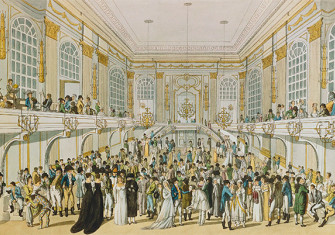The Libellous Letters of the Chevalier d’Eon
Chevaliere d’Eon or Chevalier d’Eon? An 18th-century legal dispute between two French spies unravelled into a public battle about identity.
![‘Hail! Thou Production most uncommon. Woman half man and man half Woman!’, frontispiece to An Epistle from Mademoiselle D’Eon to the Right Honorable L[or]d M[ansfiel]d, 1778. Trustees of the British Museum. ‘Hail! Thou Production most uncommon. Woman half man and man half Woman!’, frontispiece to An Epistle from Mademoiselle D’Eon to the Right Honorable L[or]d M[ansfiel]d, 1778. Trustees of the British Museum.](/sites/default/files/2024-12/deon_spy_history_today.jpeg)
On 27 November 1776 a case came before Lord Mansfield, Chief Justice of the Court of King’s Bench, in which, the Morning Chronicle reported, proceedings were repeatedly interrupted by the ‘loud and hearty laughs’ of all in attendance. The cause of such mirth was the reading aloud of a set of letters written by the Chevalier d’Eon, a French spy and diplomat, and complainant in the case.
D’Eon was no stranger to the English courts. In 1764 he was tried and found guilty of libel for the publication of Lettres, Mémoires & Negociations Particulières du Chevalier d’Eon, a scandalous work that criticised the then French ambassador to Britain, the Comte de Guerchy. By 1776, however, d’Eon was better-known for the remarkable rumour that the Chevalier was, in fact, the Chevalière; not a man but a woman. Such a tantalising rumour had inspired the gamblers of 18th-century London, with tens of thousands of pounds wagered – in the form of insurance policies – on his proving female.







